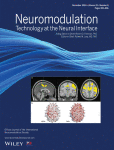Anyone would comment on this? Thanks
Complete nonsense. It is a post marketing survey. 37/42 patients at 2 year mark. Who were these 42? How many were screened to be these 42? 5 sites over x years to recruit. Nonconsecutive, no randomization. Mean age of 47 and only 17% worked full time.
Methods
Study Design
This post-market clinical follow-up (PMCF) study is an open label 5-year prospective follow-up of patients with intractable CLBP treated with restorative neurostimulation of the L2 medial branch of the dorsal ramus at five sites in the United Kingdom. The data presented here are the 2-year patient-reported outcomes collected across all five UK sites (ClinicalTrials.gov Identifier:
NCT01985230). Any serious adverse events, whether related or not, and related adverse events were classified by the treating physician. These events were categorised as ‘device-related’, ‘procedure-related’, ‘stimulation-related’, or ‘unrelated’, and were tracked longitudinally through to resolution. Patients were implanted with a ReActiv8® device (Mainstay Medical, Dublin, Ireland) according to the manufacturer’s instructions.
The study protocol was reviewed and approved by a central ethics committee (NHS Health Research Authority North East—York Research Ethics Committee IRA’s project ID number 149412) as is required in the UK, and the protocol was followed in accordance with the Helsinki Declaration of 1964 and its later amendments. All subjects provided written informed consent to participate in the study.
Patient Selection
Consenting patients suitable for treatment with restorative neurostimulation therapy were recruited from five sites across the UK and included in the PMCF. As this cohort was intended to represent restorative neurostimulation in general clinical practice,
little formal guidance was given in the way of selection criteria beyond the instructions for use and indications for the CE Mark. Effectively, patients were eligible if they were adults with a history of predominantly mechanical CLBP for longer than 90 days that was refractory to physiotherapy and medication, though in practice the patient history of CLBP was considerably longer. Physicians were trained in physical tests to establish the presence of mechanical low back pain with multifidus dysfunction such as the prone instability test [
20] to include as part of the clinical work up, though the results of these individual tests were not additional inclusion or exclusion criteria. Patients were not indicated for implantation if they had a clear indication for surgery, or another clinical condition that the treating physician deemed could interfere with delivery of the therapy or assessment of pain relief. Patients were assessed at baseline by a chronic pain, musculoskeletal, or neuromodulation management multidisciplinary team (MDT). Psychological impact was assessed using both MDT assessment and the Depression, Anxiety and Stress Scale (DASS) [
21], where a threshold of greater than 10–13 on the depression subscale is indicative of mild depression, and 14+ moderate to severe depression. Depression was not an exclusion criterion in this cohort. Thus the patients enrolled into this study presented with chronic mechanical low back pain with multifidus dysfunction as identified by their treating physician using physical assessment and/or magnetic resonance imaging (MRI) in order to be consistent with the instructions for use of the device.

